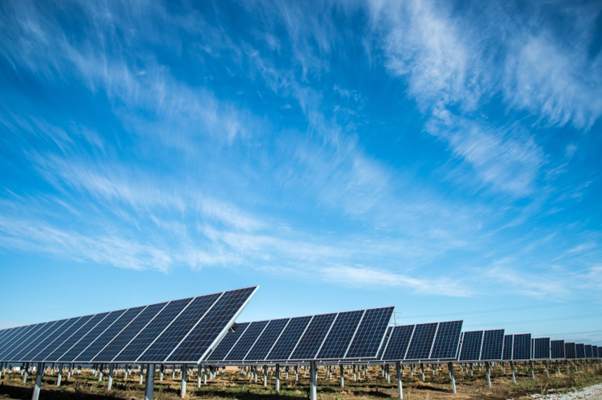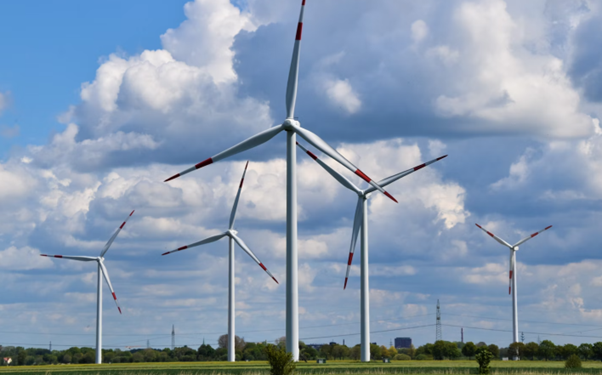Image’s Source: https://unsplash.com/photos/XGAZzyLzn18
With issues like the melting of the polar ice caps, depletion of the ozone layer, super storms or excessive drought, massive flooding, and environmental pollution, people around the world have become more mindful of the environment and conscious of their impact on mother earth. Consequently, global leaders recognize the urgency of transitioning to an alternative energy source that’s more clean and green. By reducing dependence on fossil fuels, the world can significantly decrease greenhouse gas emissions and tackle the urgent challenge of climate change. This proactive stance safeguards the environment from harmful pollutants while enhancing public health through improved air quality.
Even young students tasked to research and write my essays online know that these government programs limit global warming and its devastating consequences. Moreover, these programs stimulate economic growth and create job opportunities, fostering economic resilience and sustainable development by reducing the reliance on the importation of oils from foreign countries. Let’s delve into five crucial government initiatives aimed at revolutionizing the way the world generates and consumes energy. These initiatives not only aim to reduce reliance on fossil fuels but also pave the way for a greener and healthier future for generations to come.
1. Electrification of Transportation: Powering the Road to Clean Mobility
Perhaps the most popular program that most consumers immediately see and feel is the electrification of transport. Everyone knows that the transportation sector is a significant contributor to toxic emissions, especially traditional cars with engines and mufflers reliant on gas. To mitigate this issue, leaders are actively promoting the electrification of transportation as a crucial step toward reducing carbon footprints. Initiatives include:
- Providing subsidies and tax incentives for electric vehicle (EV) adoption
- Investing in numerous charging infrastructures
- Supporting research and development for EV technology
As more electric vehicles traverse the roads, numerous cities are reveling in the decline of air pollution levels. Moreover, an added advantage lies in the fact that electric cars draw power from renewable sources and exhibit superior efficiency compared to internal combustion engines. Because of the popularity of EVs like Tesla and Prius or even hybrids like the Corolla Cross, politicians encourage companies to explore innovative solutions. For instance, hydrogen fuel cells and sustainable biofuels are under research to decarbonize other modes of transportation, such as aviation and shipping.
2. Renewable Energy Targets: Powering the World with Clean Alternatives
A goal remains a wish without concrete plans. Thus, many world leaders have formulated renewable energy targets to drive the transition to cleaner sources. These initiatives emphasize clear objectives and present a blueprint for boosting the proportion of renewable energy within the conventional grid system. Above all, governments provide incentives for investments and advancements in renewable technologies such as solar, wind, and hydroelectric power.
With sustainable alternatives in place, the world witnesses a noteworthy decrease in emissions. And this marks a significant stride towards attaining a future powered by sustainable energy. Governments are actively implementing a diverse range of strategies to meet their targets, encompassing the following:
- Providing financial incentives such as tax credits and grants to renewable energy developers
- Streamlining the permitting process for renewable projects
- Investing in research and development to enhance the efficiency and affordability of clean technologies
Source: https://unsplash.com/photos/8NBACfGMFtw
3. Energy Efficiency Programs: A Smarter Approach to Consumption
Improving efficiency is a key pillar of government initiatives for a cleaner energy landscape. Governments are implementing comprehensive energy efficiency programs that target various sectors, including buildings, appliances, and industrial processes. These programs aim to:
- Reduce energy waste
- Lower energy consumption
- Decrease greenhouse gas emissions
- Promote an eco-friendly lifestyle
Governments promote energy-efficient technologies and practices through public awareness campaigns, incentives, and regulations. For instance, they have high standards for appliances, encourage retrofitting of buildings to improve insulation and provide rewards for energy-saving upgrades. These programs reduce environmental impact by optimizing consumption while helping consumers save on their bills.
4. Feed-in Tariffs and Subsidies: Making Alternatives More Pocket-Friendly
One of the key challenges in transitioning to renewable energy is the initial cost of installation and infrastructure development. World leaders address this challenge by introducing feed-in tariffs and renewable energy subsidies. For example, feed-in tariffs guarantee long-term contracts with favorable prices for renewable energy producers. This approach ensures that both parties find investing in clean energy projects financially beneficial.
Additionally, subsidies reduce the initial costs for households and businesses, making it easier for more people to embrace renewable energy systems. Feed-in tariffs incentivize investments in renewable energy generation by offering consistent and predictable income opportunities. Meanwhile, subsidies make clean technologies more attainable and cost-effective for consumers. These initiatives help in:
- Accelerating the growth of the renewable energy sector
- Creating even more jobs in these new industries
- Reducing carbon emissions
- Promoting a more sustainable energy landscape
5. Carbon Pricing and Emission Trading Schemes: Putting a Price on Pollution
Tackling the harmful impact of carbon emissions requires governments to implement carbon pricing mechanisms and emission trading schemes. These measures involve assigning a value to pollution. Carbon pricing works by placing a monetary value on carbon emissions through two primary methods.
First, a carbon tax imposes a direct fee on each ton of carbon dioxide released. This fee hurts the pockets of companies that generate high levels of carbon emissions. Second, cap-and-trade systems set a limit on total emissions and distribute tradable permits to companies. These permits can be bought, sold, or traded, establishing a market for emissions.
This approach encourages companies to invest in cleaner technologies, reduce emissions, and acquire additional permits. The revenue generated from carbon pricing mechanisms can be reinvested in clean energy projects and initiatives, forming a self-sustaining cycle of environmental improvement.
Final Thoughts
As the world confronts the challenges of climate change, governments are implementing important measures to foster a cleaner energy landscape. The world can hopefully transition to a more sustainable source by spearheading programs. Besides, these initiatives also do so much more than just lessen environmental impacts. They also create job opportunities, lessen energy bills, improve public health, and encourage innovation.
Hence, governments, businesses, and individuals need to collaborate and wholeheartedly support these programs. Working towards a cleaner and brighter future benefits everyone. By joining forces, everyone can construct a sustainable world that places the well-being of the planet and future generations at the forefront.




